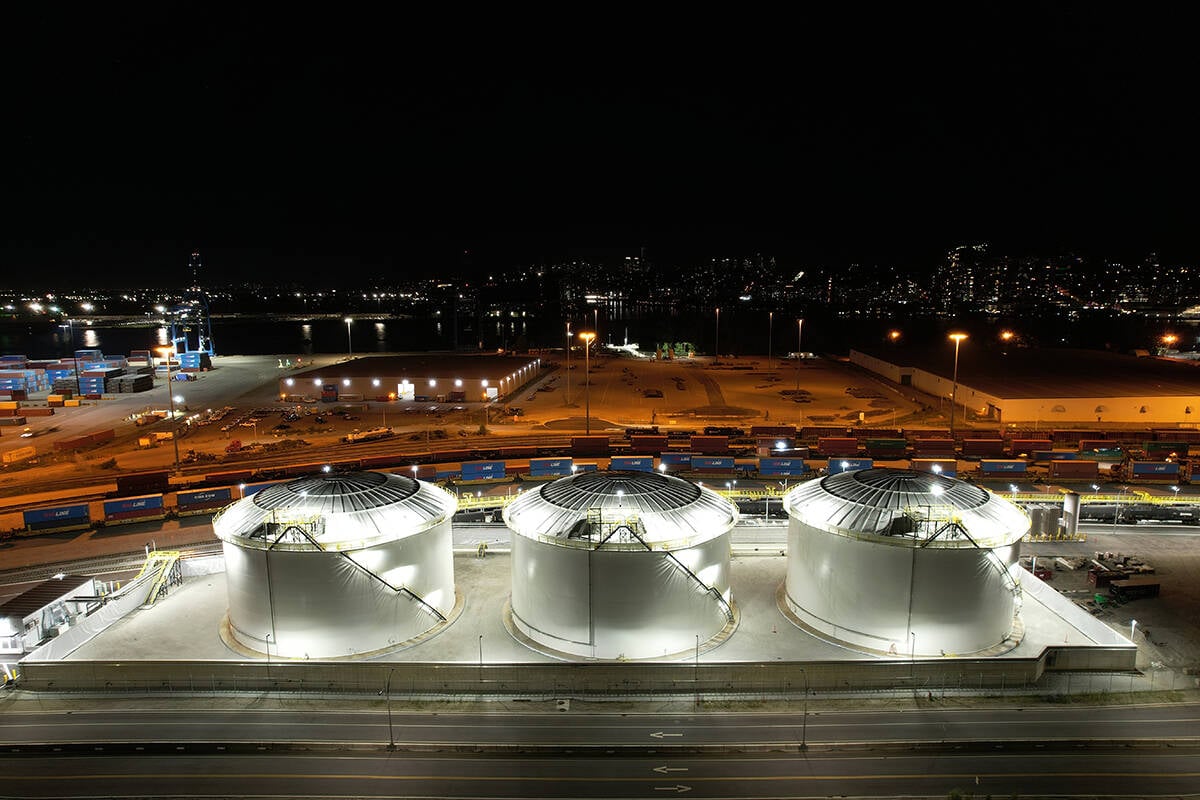MINTON, Sask. – Lee Nilsson made a difficult trip into cattle country that, as he put it, “could have ended badly if there were a rope, a rafter and three- legged stool handy.”
Nilsson and his family own and operate XL Foods of Calgary and Moose Jaw, one of Western Canada’s largest, and for much of last year, only cull cow slaughter facility. He chose to attend a Saskatchewan Stock Growers annual meeting in Minton, Sask., Feb.14.
There was not a lot of St. Valentine’ Day love expressed for the packer from the 110 cattle producers in attendance.
Read Also

Canola oil transloading facility opens
DP World just opened its new canola oil transload facility at the Port of Vancouver. It can ship one million tonnes of the commodity per year.
Nilsson told producers why their cull cows, grading D1 and 2, have dropped from highs of 65 cents per pound one year ago to 22 cents and explained why he as a packer can do little to increase that price.
“For the most part, I am here to dispel some myths and tell the producers why prices are the way they are. It wasn’t a popular message, but I didn’t expect it would be,” he said.
Minton is about 130 kilometres south of Regina.
Michael Burgess ranches near Big Beaver, Sask. He said he respected Nilsson for attending the meeting, but he holds to his belief that packers are profiting at the expense of producers.
Prices being paid for cows older than 30 months are at all-time lows because exports of the meat have ceased, Nilsson told the farmers at the meeting.
“Urban consumers aren’t like you folks on the farm. You kill an animal, put it in the freezer and eat it from one end to the other. They only want certain parts and only so much of each. The industry has to sell the various cuts into different markets to get rid of the whole carcass,” he said.
Premium American markets for cuts of mature beef not destined for grinding are no longer available. Instead larger portions of D1 and 2 animals are being ground for hamburger and sold into the Canadian wholesale and retail markets in competition with low-priced beef from Australia, New Zealand and South America.
“As Canadians we are doing a great job of trying to eat our way out of this, but with the border opening (to boneless feeder beef under 30 months) the ‘buy Canadian’ message seems to have been silenced,” said Nilsson.
“If we are going to deal with all the meat from these cull animals we will need to make it a priority once again.”
According to Canfax, 180,000 tonnes of non-fed boneless beef are produced in Canada annually. Before the loss of the U.S. market, 72,000 tonnes were exported south on the hoof, 64,800 tonnes were packed and exported and 43,200 tonnes were eaten inside Canada.
Actual Canadian consumption of boneless beef from animals that would grade D1 and 2 is about 174,600 tonnes, roughly equivalent to annual Canadian production.
“That I have to compete with offshore beef in Canada is ironic. That I have to truck cull cows from Quebec and (the lower mainland of British Columbia) to slaughter out here is really ironic,” said Nilsson.
Neil Yahnke, president of the Canadian Cattlemen’s Association and Gouldtown, Sask., rancher, said local producers have chosen to keep their culls at home hoping for an additional calf from rebreeding or that the price might improve in the new year.
But when it comes to prices, Nilsson only had more bad news.
“The price for cows isn’t moving upwards anytime soon. As long as we can’t export those cows over 30 months, and that is for the foreseeable future, the price will have to stay where it is.”
Nilsson said despite speculation that he is making a fortune on cull cows, he said he making only a basic profit.
“What’s worse is that if you hang on to those culls until next fall, the problem of surplus cows is only going to be a lot worse and you’ll have fed them a year longer than you should.” he said.
Despite many tough questions and a little name calling, Nilsson said he was glad he attended the meeting.
“I’ve got tough skin. We’ve got ranches, feedcattle, auctions and pack meat.
“We see the whole chain up close and it isn’t pretty right now.”
















